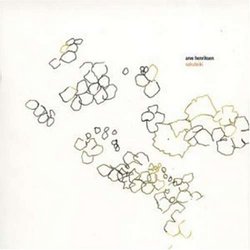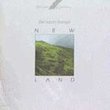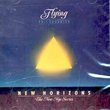| All Artists: Arve Henriksen Title: Sakuteiki Members Wishing: 3 Total Copies: 0 Label: Rune Grammofon Release Date: 1/1/2004 Album Type: Import Genres: Dance & Electronic, International Music, Jazz, Pop Styles: Europe, Scandinavia, Avant Garde & Free Jazz, Dance Pop Number of Discs: 1 SwapaCD Credits: 1 UPCs: 7033662020218, 0044001639821, 044001639821, 7071155270504, 766483378844 |
Search - Arve Henriksen :: Sakuteiki
 | Arve Henriksen Sakuteiki Genres: Dance & Electronic, International Music, Jazz, Pop
|
Larger Image |
CD DetailsSimilarly Requested CDs
|
CD ReviewsA winner Ikkyu Jones | cyber-void | 03/21/2006 (5 out of 5 stars) "Arve Henriksen plays the horn like nobody else. At times sounding like an ancient Japanese shakuhachi wizard, Henriksen knows how to move air with the greatest of ease. As his record label (Rune Grammofon) puts it, Sakuteiki is "A remarkable study in space and locations, the music progresses slowly through a series of meditations on sensory impressions." That it was impeccably recorded "directly to 2 tracks using 2 microphones and no additional effects" seems impossible in these digital times. Yet, there it is. The only other performer to accomplish such a cool sound by the same methods is Terje Isungset, one of Hendriksen's musical collaborators. Sakuteiki is another fine recording coming out of Norway." THE MOST HONEST MUSIC AVAILABLE Jeanne Griswold | CHINA | 02/23/2004 (5 out of 5 stars) "This cd........wow. how can i begin. arve has a such a beautiful soul and never, NEVER have i been so captivated by a solo instrument performance EVER. he coaxs so many sounds out of his instrument - from the sound of a japanese flute, to blowing through an accordion, from beautiful ocean waves, to the eerie sound of a rusty swing. never will you ever find music so soulful, beautiful, honest, and therapeutic. , THE WORLD IS FULL OF CHOCOLATE, I LOVE FUNNY BEARS." Sound painting with the breath of life... Larry L. Looney | Austin, Texas USA | 07/07/2008 (5 out of 5 stars) "When I played Arve Henriksen's music for the first time for one of my friends, he listened intently for a bit, then asked, `So when does the trumpet come in...?' When I told him the trumpet was the only instrument playing at the moment, he was astonished - and I'll admit to being surprised myself the first time I heard him play (on Sinikka Langeland's wonderul Starflowers CD). There are times when his trumpet sounds very much like a shakuhachi, the bamboo flute favored by Japanese Zen monks for meditation purposes - other times, it almost sounds like a human voice, living and organic.
On his website, Arve comments on how his sound developed: `An interest in sound-making was there from the beginning of my work with the trumpet. I have spent many hours on developing a warm sound, for instance, but not only that. In my opinion, the trumpet has vast potential for tone and sound variations that we still have not heard. At one point, I think it was in 1988, Nils Petter Molvær lent me a cassette of shakuhachi flute playing. Then things changed. I let the music "ring" and develop in my head. I was astonished by the sound of this flute...This has made me work with tone and sound making in a new direction ' He has gone on to explore not only Japanese music, but music from all over the world, incorporating diverse elements into his own original style. The sounds and thoughts that move his spirit find their expression in his music - the results are unique and astonishing. On SAKUTEIKI, the listener is submerged in a meditative atmosphere - a note on the CD jacket calls it `a treatise on garden making', gently stressing the Zen characteristics of the music. The tracks are brief - the titles are very much in keeping with the atmosphere (`inside tea-house', `peaceful - close to cherry trees', `beauty of bamboos', `paths around the pond', `children in my garden', &c). This music feels as if it is made up of delicate brush strokes - much like a Japanese painting or calligraphy. There is a sense of economy here - a simplicity that is deceiving in its richness. Henriksen made the conscious decision to keep the music from being `complicated' - the rooms in which the recording was made (the Emanuel Vigeland Museum in Oslo, and in two churches noted for their acoustic properties) were chosen for their reverberation characteristics as `canvases' on which he could paint his music. As in the Zen philosophy of garden-making, referred to in the note (as well as the album title, taken from an 11th century Japanese manuscript on the subject), each note and sound is placed as carefully as a physical element in such a meditative space. This is unforgettable music - moving and timeless. " |

 Track Listings (15) - Disc #1
Track Listings (15) - Disc #1

